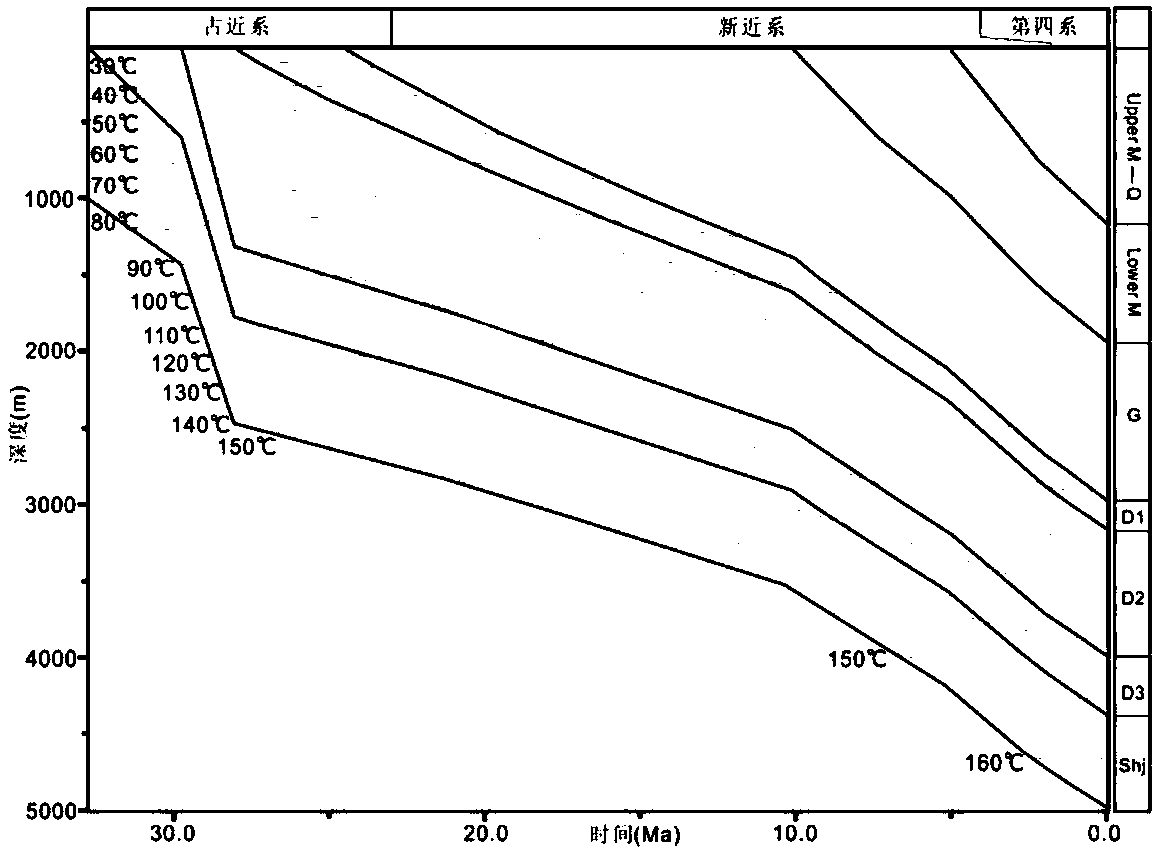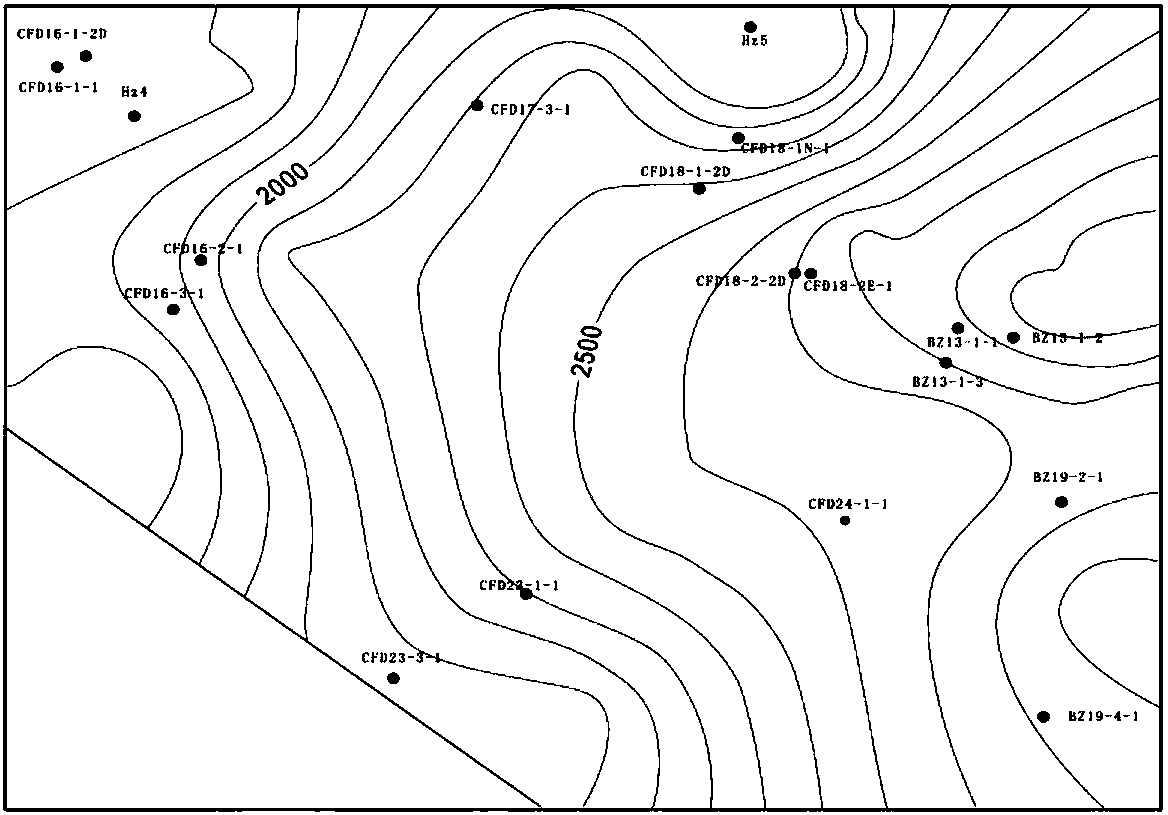Quantitative forecasting method for clastic rock reservoir corrosion hole increasing amount
A prediction method and technology for clastic rocks, which are applied in special data processing applications, instruments, electrical digital data processing, etc. Problems such as the difficulty of reservoir dissolution
- Summary
- Abstract
- Description
- Claims
- Application Information
AI Technical Summary
Problems solved by technology
Method used
Image
Examples
Embodiment 1
[0111] A quantitative prediction method for dissolution and porosity increase of clastic rock reservoirs, comprising the following steps:
[0112] 1) Collect geological data in the study area, including:
[0113] ①Study result map of sedimentary facies of the target layer in the study area;
[0114] ② Contour map of target layer interface structure;
[0115] ③ Contour map of the interface structure of the overlying strata on the target layer;
[0116] ④Reservoir physical property data in the study area;
[0117] ⑤ Dissolution data of reservoir single well in the study area;
[0118] ⑥Diagenetic evolution sequence in the study area;
[0119] ⑦The burial history and thermal evolution history of the study area.
[0120] 2) Establish the original data database
[0121] (1) Sedimentary facies type database F_m
[0122] Summarize and classify the sedimentary facies types of clastic rock reservoirs to establish a sedimentary facies database F_m, which includes: alluvial fan-dr...
Embodiment 2
[0196] Based on the quantitative prediction method of clastic rock reservoir dissolution pore increase, the specific steps are as follows to predict the pore dissolution of the second member of Dongying Formation in Bozhong Sag:
[0197] 1) Collect geological data in the study area
[0198] The geological data of the second member of the Dongying Formation in the Bozhong Sag were collected, and various types of data were classified according to the original data database. The collected geological data include the following contents: Sedimentary Facies Map of the Second Member of Dongying Formation, Lithology Map of the Second Member of Dongying Formation, Fracture Distribution Map of the Second Member of Dongying Formation, pH Map of the Second Member of Dongying Formation, The diagenetic stage diagram of reservoirs in the first member, and the sedimentary cycle diagram of reservoirs in the second member of Dongying Formation (as shown in the figure).
[0199] 2) Determine re...
PUM
 Login to View More
Login to View More Abstract
Description
Claims
Application Information
 Login to View More
Login to View More - R&D
- Intellectual Property
- Life Sciences
- Materials
- Tech Scout
- Unparalleled Data Quality
- Higher Quality Content
- 60% Fewer Hallucinations
Browse by: Latest US Patents, China's latest patents, Technical Efficacy Thesaurus, Application Domain, Technology Topic, Popular Technical Reports.
© 2025 PatSnap. All rights reserved.Legal|Privacy policy|Modern Slavery Act Transparency Statement|Sitemap|About US| Contact US: help@patsnap.com



